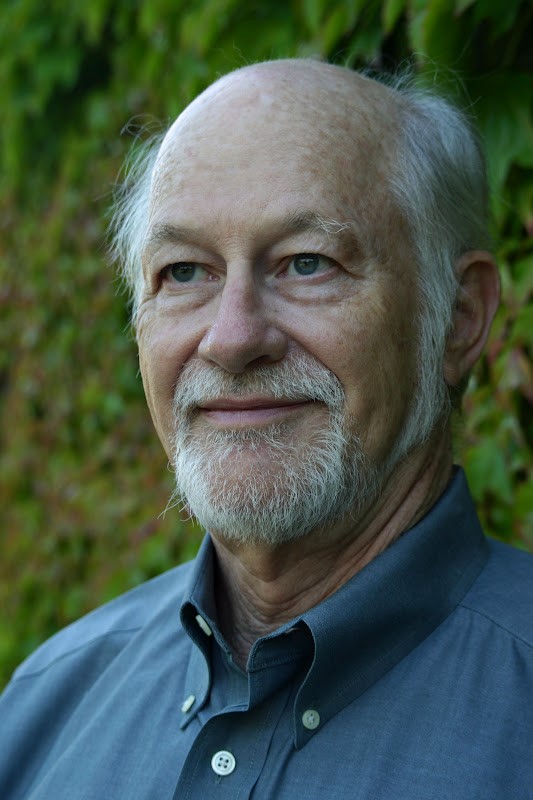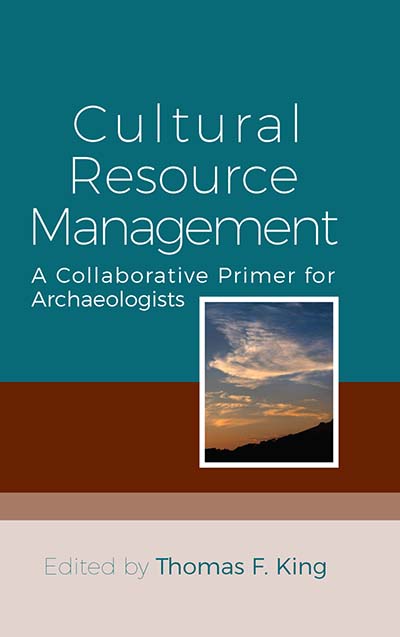Heritage/CRM extraordinaire Thomas F. King discusses the allure of archaeology, the evolution of the Cultural Resource Management and Heritage Studies fields, and what it’s like to collaborate with fourteen contributors.

What drew you to the study of archaeology?
When I was 5 years old, my mother took me to see Walt Disney’s ‘Fantasia.’ I was really taken by the dinosaurs. I asked my mother how people knew about such creatures and my recollection is that she said “archaeologists study them” Having majored in micropaleontology in college, she vigorously disputed this recollection. Anyhow, I made my way down to the public library and began reading books on archaeology and dinosaurs. By age 10 I’d figured out that archaeologists didn’t do dinosaurs, and knew I had a decision to make. I more or less flipped a coin and wound up with archaeology.
What aspect of writing this work did you find most difficult?
Making sure I was on top of current developments all over the country and world – hence my collaborators.
Do you think there are aspects of this work that will be controversial to other scholars working in the field?
No. Those who disagree with me will simply ignore me.
What’s a talent or hobby you have that your colleagues would be surprised to learn about?
A lot of reading in pop quantum physics, Advaita Vedanta, spiritualism, life after death, animal and plant cognition.
If you weren’t a CRM archaeologist, what would you have done instead?
Probably starved.
To what extent do you think the book will contribute to debates amongst academics and activists within Heritage Studies?
Not much. I don’t think there’s much meaningful debate, but I may just be missing it. What I HOPE it does is help archaeologists understand that CRM isn’t just a kind of archaeology – that there’s a lot more to it, and it’s doing nobody a service to channel second-rate archaeologists into the field.
What aspect of compiling advice from fourteen collaborators did you find most challenging? Most rewarding?
It wasn’t very hard, and it was pretty rewarding. I just blasted out drafts to all the collaborators, got their comments, dealt with them, and learned stuff in the process. I selected collaborators representing a pretty wide range of geographies, ethnicities, and genders, though I wish I’d been able to go farther. Getting their perspectives was very enlightening to me.
How have Heritage Studies changed since you first were a scholar in the field? What is the most significant development?
Well, when I started, there was no such critter as “heritage studies.” There was archaeology, there was history, there was architectural history, there was applied anthropology, there was historic preservation, and so on. To SOME extent these are understood today to be subsumed under the rubric “heritage studies,” or in the U.S., “CRM,” but they’re hardly integrated; they don’t very much talk with one another. I suppose that’s too bad.
Did any perceptions on the subject change from the time you started your research/compiled the contributions to the time you completed the volume?
Not that I can recall.
What is one particular area of interest or question, that hasn’t necessarily been the focus of much attention, which you feel is especially pertinent to your field today and in the future?
How actually to involve people in the work, at all levels and in all ways. Making it relevant to people; making it worth the investment of their time.
What did you like most about writing this book?
The writing; I enjoy stringing thoughts together, trying to make them make sense. And learning from my collaborators and co-authors.
What did you like least about writing the book?
Its occasional cat-herding aspects.
What do you hope that readers get out of this book?
That CRM, which I’m afraid a lot of student and professorial archaeologist in the US take to be a sort of low-grade applied archaeology, is a lot more than that, or can be, should be, and that we have a responsibility to make it so.
What is your favorite book?
Ananthaswamy, Anil. 2018. Through Two Doors at Once: The Elegant experiment that captures the enigma of our quantum reality. New York, Dutton. In CRM/Heritage, I can’t think of a thing that excites me.
Hopefully your title Cultural Resource Management will change that!
THOMAS F. KING has worked in heritage or cultural resource management for over fifty years, in government and in the private sector with a wide range of clients. He is also the author of many textbooks and journal articles about archaeology and historic preservation. From 1977 to 1979. he helped develop archaeological and historic preservation programs in the Federated States of Micronesia, the Republic of Palau, and the Republic of the Marshall Islands. Between 1979 and 1989 King was employed by the Advisory Council on Historic Preservation in Washington DC, where he and his wife, the late Patricia Parker, were responsible for writing National Register Bulletin 38, a U.S. government guideline document that many indigenous groups and local communities have used to protect their cultural heritage from destructive government projects. He was awarded the PhD in anthropology in 1976 by the University of California, Riverside.
ABOUT THE BOOK
CULTURAL RESOURCE MANAGEMENT
A Collaborative Primer for Archaeologists
Edited by Thomas F. King
Stressing the interdisciplinary, public-policy oriented character of Cultural Resource Management (CRM), which is not merely “applied archaeology,” this short, relatively uncomplicated introduction is aimed at emerging archaeologists. Drawing on fifty-plus years’ experience, and augmented by the advice of fourteen collaborators, Cultural Resource Management explains what “CRM archaeologists” do, and explores the public policy, ethical, and pragmatic implications of doing it for a living.
Read Introduction
Browse related titles

